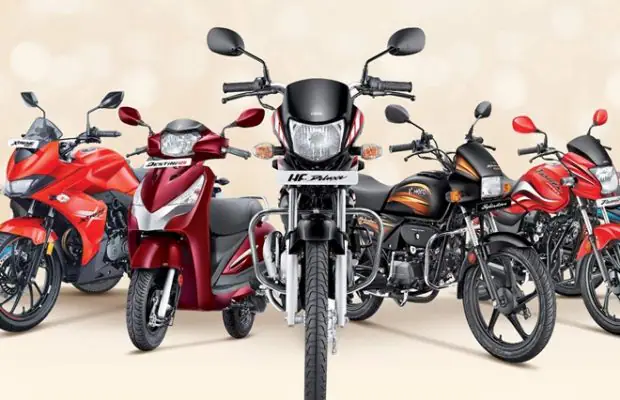Market News
ABS mandate for all two-wheelers from 2026: safety upgrade or margin headwind?
.png)
4 min read | Updated on July 01, 2025, 17:21 IST
SUMMARY
Starting January 2026, all new two-wheelers sold in India must be equipped with Anti-lock Braking Systems (ABS), regardless of engine size. Two Bureau of Indian Standards (BIS) certified helmets will also be mandatory at the time of purchase. This regulatory shift will increase vehicle prices, influence OEM margins, and could benefit select automotive suppliers. We examine the implications for manufacturers, investors, and the broader industry.

The overall Q4 earnings showed tepid topline growth for two-wheeler segment. Image source: Shutterstock.
Shares of auto ancillary companies and two-wheeler OEMs were in focus on Tuesday after Ministry of Road Transport notified the draft propsal issued on June 20 regarging mandatory anti-braking system in two-wheelers.
The Ministry of Road Transport and Highways (MoRTH) issued a draft notification on June 23, 2025, proposing two changes to the Central Motor Vehicle Rules
Currently, ABS is required only for bikes with engine capacities above 125cc. Most smaller two-wheelers use Combined Braking Systems (CBS), which will be phased out under the new rules.
Why ABS Is Being Made Mandatory
The government cited accident statistics and safety research to support this move. According to MoRTH, 44.5% of total road fatalities in 2022 involved two-wheelers. India had over 26.4 crore registered two-wheelers at the end of 2022, and nearly 45 % of them lacked ABS.
Research from multiple global studies shows that ABS reduces crash risks by 35 to 45 %. It does this by preventing wheel lock-up and skidding during emergency braking, helping riders maintain control on wet or uneven surfaces. This regulation is expected to improve overall road safety, particularly for entry-level bike users who represent a large share of total riders in India.
Cost Impact on Buyers
Implementing ABS and supplying two certified helmets will result in a higher cost per unit for manufacturers. According to market experts, there will be anywhere between ₹3,000 and ₹5,000 cost increase. The price of a 100cc or 110cc scooter, currently ranging between ₹70,000 to ₹90,000, could increase by approximately 5%. This is significant in a highly price-sensitive segment, and is likely to be passed on to consumers.
Who Will Be Affected in the Industry
India sold approximately 1.96 crore two-wheelers in FY25. Of this, 1.53 crore vehicles (78 %) were 125cc or below. These vehicles did not require ABS under current regulations but will be impacted by the new rule. Entry-level models from Hero MotoCorp, Honda, Bajaj Auto, and TVS are likely to be affected. These companies may see short-term pressure on volumes as price hikes could lead to postponement of purchases or higher demand for used vehicles.
Key Beneficiaries Among Suppliers
While OEMs may experience near-term challenges, select component manufacturers are well-positioned to benefit from the regulation.
| Company | Market Cap (INR Crore) | FY25 Revenue (INR Crore) | FY25 PAT (INR Crore) | |
|---|---|---|---|---|
| BOSCH LTD | 95,124 | 18,087 | 2,015 | |
| UNO MINDA LTD | 63,646 | 16,775 | 1021 | |
| ENDURANCE TECHNO. LTD. | 37,018 | 11,561 | 836 | |
| ASK AUTOMOTIVE LTD | 10,313 | 3,601 | 248 | |
| RANE HOLDINGS LTD | 2,265 | 4,362 | 221 | |
| SUNDARAM BRAKE LININGS LTD.D | 312 | 352 | 5 |
ABS-Linked Auto Ancillary Companies
Endurance Technologies is the largest listed company with direct exposure to ABS manufacturing. It has a technical partnership with BWI Group and supplies to leading OEMs. UNO Minda manufactures brake-related components and may benefit indirectly from increased demand for compliant systems. Rane Holdings, through its subsidiaries Rane Brake Lining and Rane Brake Systems, is involved in producing brake-related parts, though not ABS units themselves.
Potential Risks and Considerations
While the regulation offers a clear safety benefit, the transition may present operational and financial challenges:
-
OEMs may require significant capital expenditure to upgrade lower-end models
-
Smaller players in the two-wheeler market may face margin pressures
-
Consumers could defer purchases due to price sensitivity
-
Regulatory delays or stakeholder feedback may postpone implementation
However, given the public safety rationale and alignment with global best practices, it is likely that the regulation will proceed as planned.
The mandate to install ABS across all two-wheelers from January 2026 is a significant shift in India's road safety policy. While this move is likely to push up vehicle prices in the short term, it is expected to create new opportunities for suppliers of braking systems and related components.
About The Author
Next Story

